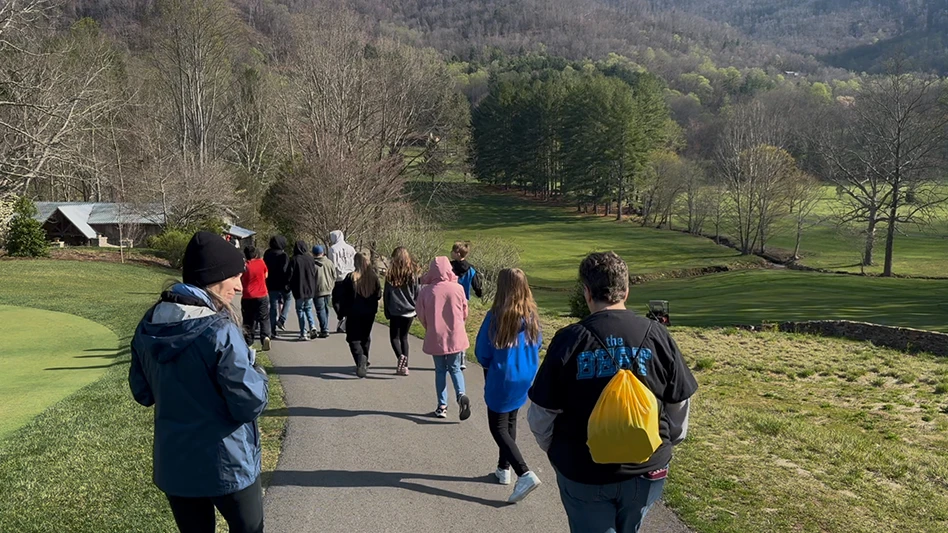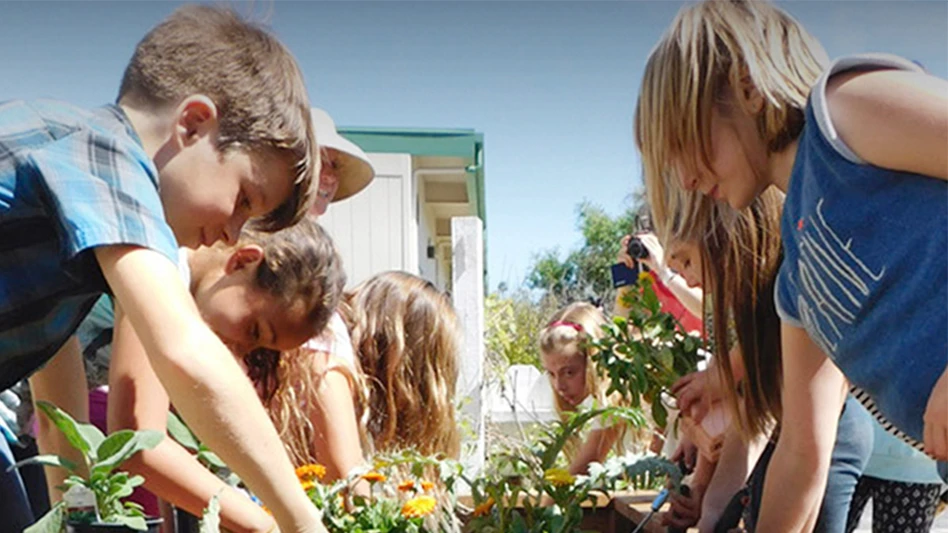The scope of responsibilities for maintenance staffs at golf courses throughout the country varies. Some do more in-house than others, and that usually depends on staff size, budgets and expertise. Typically, most maintenance work is done in-house. But sometimes it’s better to contract-out certain maintenance practices. Tree work is one example.
At the 18-hole Contraband Bayou Golf Club at L’Auberge du Lac in Lake Charles, La., Ray Butgereit, director of golf operations, contracts-out little. One area where he calls for help is with tree maintenance.
|
|
In addition to removing dead wood, Butgereit has been replacing trees that were lost as a result of the damage caused by Hurricane Rita.
Butgereit, who manages a staff of 24 (half of which are part time), says tree work is needed three or four times a year at Contraband Bayou.
Ken Gorzycki, CGCS, director of golf course maintenance at Barton Creek Resort in Austin, Texas, also contracts-out tree work such as major trimming or removal because it’s work that’s over and above what his staff is equipped to do.
“We don’t have that expertise,” he says.
When it comes to treating the trees at Barton Creek’s four courses, Gorzycki hires an arborist to do the work.
In California, Gill Stiles, golf course superintendent at Santa Rosa Golf & Country Club, contracts-out tree work as well. At Santa Rosa, there are hundreds of 50-year-old Monterey pines that were planted when the course was built.
“Pine trees aren’t considered a good golf course tree,” Stiles says.
Many pines at Santa Rosa are dying because of pitch canker, which is caused by beetles burrowing in the trees. There are 200 to 300 trees that need to be removed from the course because of that, according to Stiles.
“We surveyed all the trees and have taken trees out on the basis of safety – those are the first to go,” he says. “If we have dead trees, we address it quickly because once a tree is dead, it becomes a safety issue. A tree needs to come down in 30- to 40-foot sections, and then each section is run through a chipper. It can cost as much as $2,000 to remove a tree and plant one in its place.”
|
|
Expertise needed
Butgereit, who has been at L’Auberge for two years and helped build the course there, says the contractor he hired for tree work understands the delicacy of working on a golf course and stays off the greens and tees and works quietly around golfers.
Stiles says he’s gone through almost every tree contractor in his area to hire one.
“It’s a lot more difficult and expensive to do tree work on a golf course,” he says. “For example, you have to lay plywood down before driving over the turf, and you have to put the chipper in an awkward place so it’s out of the way of the golfers because members expect the use of the golf course.”
That needed expertise is exactly what The Davey Tree Expert Co. brings to a job, according to Jack Swazye, a consulting forester for the company. As many superintendents know, trees are a big deal on golf courses partly because they can create turfgrass problems related to shade.
“We focus on alleviating these problems, which includes tree removal,” Swazye says. “Most courses don’t have the expertise and special labor, which is primarily climbers working with a rope and saddle, aerial lifts, bucket lifts, cranes, articulating loaders and chippers. We can move 1,000-pound logs without disturbing the turf. We have the expertise to trim trees, keep their shape and eliminate shade problems they create.”
|
|
Additionally, Swazye says the company is launching a new product at the Golf Industry Show in February. LIDAR (light, distance and ranging) mapping technology determines which limbs are creating shade and helps determine which limbs to remove more accurately.
Tree work is risky for golf course maintenance crews because they work with grass, not trees, according to Swazye.
“It’s more dangerous working in the air,” he says. “Insurance goes into another territory when you’re working off the ground. Working with a chain saw in the air is a whole different ballgame than working with a chain saw on the ground. You also need to make proper cuts without damaging the tree.”
Swazye says Davey Tree tries to steer clubs toward a tree management program because they need to know their long-term objectives and how to get there.
“We try to establish priorities,” he says.
Swazye also suggests superintendents think about inoculating trees with plant growth regulators to extend pruning cycles two or three times and reduce the size of leaves.
“Trees continue to grow,” he says. “The more you do for the turf on your course, the more trees respond because they share the same root zone.”
Aerification
“I haven’t had anyone do that in the past, but I’m looking into having someone do it now because we have older equipment and it takes three days to aerify and eight working days to apply the sand,” he says. “We do it twice a year.”
Other maintenance work Gorzycki contracts-out includes pump station maintenance and repair and soil testing, which is done twice a year. The soil consultant reviews, reports on and analyzes the soil.
|
|
Gorzycki also uses a labor service if he needs additional labor.
Aside from expertise, owning certain equipment also is a factor as to whether one outsources a maintenance practice.
“We probably do less contract work than other facilities because we have four courses, and the scale of economy is easier for us to own equipment,” Gorzycki says. “Aerifying, overseeding, verticutting and product application are several items that are contracted-out at other courses that we do in-house. However, we rent equipment, such as a stump grinder, from time to time. We’ll run it around the four courses and knock out stumps in two weeks.”
A rock saw, similar to a trencher, is another piece of equipment Gorzycki will rent. But if there’s major rock work to be done, he’ll outsource that as well.
Gorzycki says other ClubCorp properties contract more out. But if there’s a concentration of courses in an area, they’ll buy equipment and share it.
ClubCorp manages Barton Creek.
Additionally, Gorzycki contracts-out special projects such as leveling tees and redoing bunkers.
At the 85-acre Contraband Bayou, a Tom Fazio-designed course that’s part of a $400-million resort that opened in May 2005, deep-tine aeration might be contracted-out in the future.
“It’s typical for us to do a little bit more in-house than the average golf course because of our staffing,” Butgereit says. GCN

Explore the January 2006 Issue
Check out more from this issue and find your next story to read.
Latest from Golf Course Industry
- The Aquatrols Company hires marketing manager
- Renovating Bredemus in West Texas
- Renovation starts at Okatie Creek GC at Sun City Hilton Head
- The Fittest Podcast in Turf: Episode 1
- New 6-hole course debuts in Oklahoma
- GCSAA announces Grassroots Ambassador Leadership Award recipients
- Reel Turf Techs: David Gummo
- PBI-Gordon promotes two to executive level









